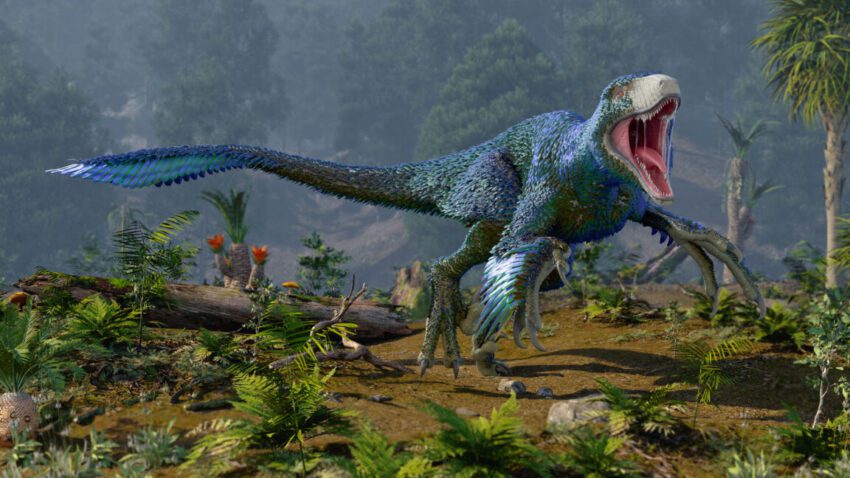
dinosaurs may have flourished right up to A recent study suggests that dinosaurs may have thrived right up until the moment an asteroid struck Earth, challenging long-held beliefs about their extinction.
dinosaurs may have flourished right up to
Understanding the Extinction Event
The extinction of non-avian dinosaurs is primarily attributed to a catastrophic asteroid impact that marked the end of the Cretaceous period approximately 66 million years ago. This event is widely recognized as a pivotal moment in Earth’s history, leading to the demise of approximately 75% of all species, including the dinosaurs. However, the nuances of this extinction event have been a topic of ongoing research and debate.
While the asteroid impact is a well-documented cause of extinction, it is essential to consider the broader environmental context in which this event occurred. Leading up to the impact, Earth was experiencing significant geological changes, including extensive volcanic activity. These volcanic eruptions, particularly those associated with the Deccan Traps in present-day India, released massive amounts of volcanic gases into the atmosphere, contributing to climate changes that may have already stressed ecosystems.
The Role of Volcanic Activity
Volcanic eruptions can have devastating effects on the environment. They can lead to acid rain, changes in atmospheric composition, and long-term climate shifts. The Deccan Traps eruptions are believed to have contributed to a gradual decline in biodiversity, making ecosystems more vulnerable to sudden changes. This context raises questions about the resilience of dinosaur populations immediately before the asteroid impact.
New Insights from Fossil Evidence
A recent study has provided new insights into the state of dinosaur ecosystems just before the asteroid struck. Researchers analyzed fossils from the Hell Creek Formation in Wyoming, a site renowned for its rich fossil beds. These fossils date back to within a few hundred thousand years of the impact, offering a snapshot of the biodiversity present at that time.
The findings suggest that the species richness of dinosaurs in this region was not as compromised as previously thought. Contrary to earlier hypotheses that indicated a decline in diversity, the new evidence points to a thriving ecosystem. This raises important questions about the overall health of dinosaur populations and the extent to which regional variations may have influenced their survival.
Hell Creek Formation: A Closer Look
The Hell Creek Formation is one of the most studied geological formations in North America, providing a wealth of information about the late Cretaceous period. It spans parts of Montana, North Dakota, South Dakota, and Wyoming, and is known for its well-preserved fossils, including those of dinosaurs, plants, and other organisms.
Researchers have long relied on this formation to understand the last days of non-avian dinosaurs. The fossils found here not only date from just before the impact but may also include deposits that capture the immediate aftermath of the event. This dual perspective allows scientists to piece together a more comprehensive picture of the ecological dynamics at play during this critical period.
Regional Variations in Ecosystems
One of the significant challenges in understanding dinosaur extinction is the limited geographical scope of fossil evidence. While the Hell Creek Formation provides valuable insights into the northern Great Plains ecosystem, it is unclear how representative this region is of global dinosaur diversity. There may have been significant regional differences in ecosystems that could have influenced the resilience of dinosaur populations.
For instance, while the Hell Creek Formation showcases a relatively diverse array of species, other regions may have experienced different ecological pressures. Factors such as climate, geography, and local environmental conditions could have led to varying levels of species richness and ecosystem stability across different areas.
Implications for Dinosaur Survival
The new findings regarding the Hell Creek Formation suggest that the extinction of non-avian dinosaurs may not have been solely due to a lack of biodiversity. Instead, it raises the possibility that certain regions, particularly those near the impact site, may have maintained robust ecosystems right up until the asteroid struck. This challenges the narrative that dinosaurs were in decline and emphasizes the need for a more nuanced understanding of their extinction.
Furthermore, the study highlights the importance of considering multiple factors when examining extinction events. While the asteroid impact was undoubtedly catastrophic, the interplay of volcanic activity, climate change, and regional ecological dynamics must also be taken into account. This multifaceted approach can provide a more comprehensive understanding of the challenges faced by dinosaurs in the lead-up to their extinction.
Stakeholder Reactions and Future Research
The implications of this study have sparked interest and debate among paleontologists and researchers in related fields. Many experts are eager to explore the findings further and investigate other fossil sites to gather more data on dinosaur ecosystems. The possibility that some regions may have been thriving just before the impact opens new avenues for research, and scientists are keen to understand how widespread this phenomenon may have been.
Some researchers have expressed caution, emphasizing the need for additional evidence to support the conclusions drawn from the Hell Creek Formation. They argue that while the findings are intriguing, they should not be taken as definitive proof that all dinosaur populations were thriving. Instead, they advocate for a more comprehensive examination of fossil evidence from various regions to build a clearer picture of the late Cretaceous ecosystem.
Future Directions in Paleontological Research
As research continues, scientists are likely to focus on several key areas to deepen our understanding of dinosaur extinction. These may include:
- Expanding Fossil Research: Investigating additional fossil sites across different geographical regions to assess the diversity and health of dinosaur populations.
- Climate Modeling: Utilizing advanced climate models to understand the environmental conditions leading up to the impact and their potential effects on ecosystems.
- Interdisciplinary Collaboration: Encouraging collaboration between paleontologists, geologists, and climate scientists to develop a more holistic understanding of the factors influencing extinction.
Conclusion
The recent study on dinosaur fossils from the Hell Creek Formation has provided valuable insights into the state of ecosystems just before the asteroid impact. While the asteroid is widely recognized as a primary cause of extinction, the evidence suggests that certain regions may have maintained diverse and thriving ecosystems up until that catastrophic moment. This finding challenges previous assumptions about the decline of dinosaur populations and underscores the complexity of extinction events.
As researchers continue to explore this topic, the interplay of volcanic activity, climate change, and regional ecological dynamics will remain crucial areas of investigation. Understanding these factors will not only shed light on the fate of the dinosaurs but also enhance our knowledge of how species respond to rapid environmental changes.
Source: Original report
Was this helpful?
Last Modified: October 24, 2025 at 3:37 am
2 views















